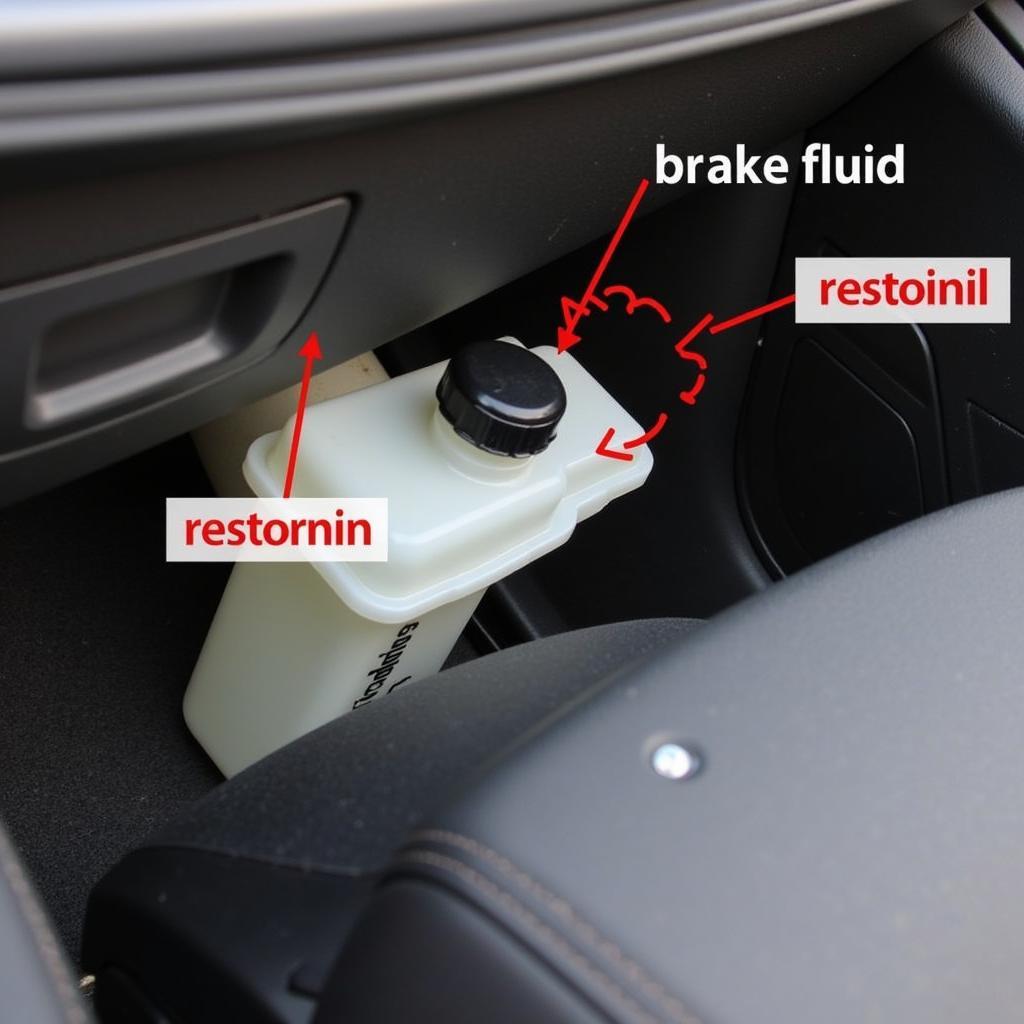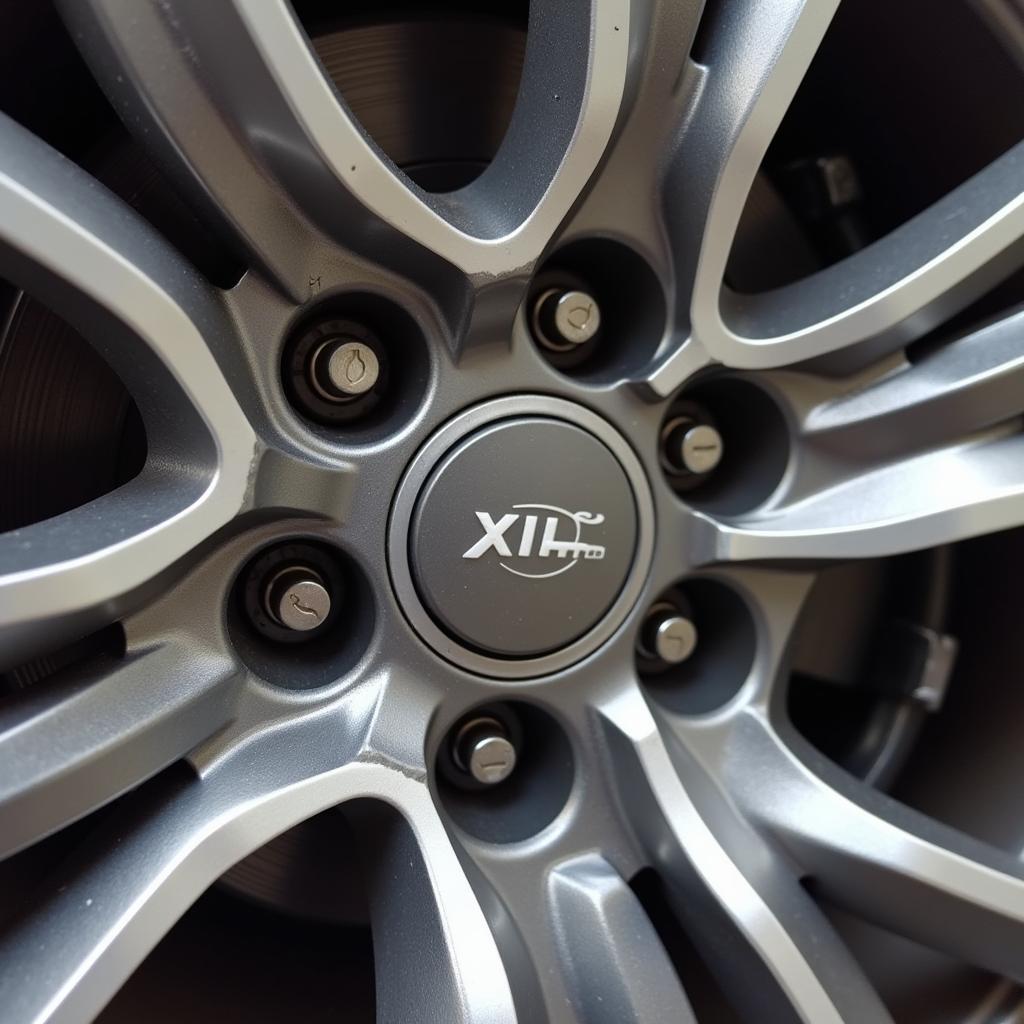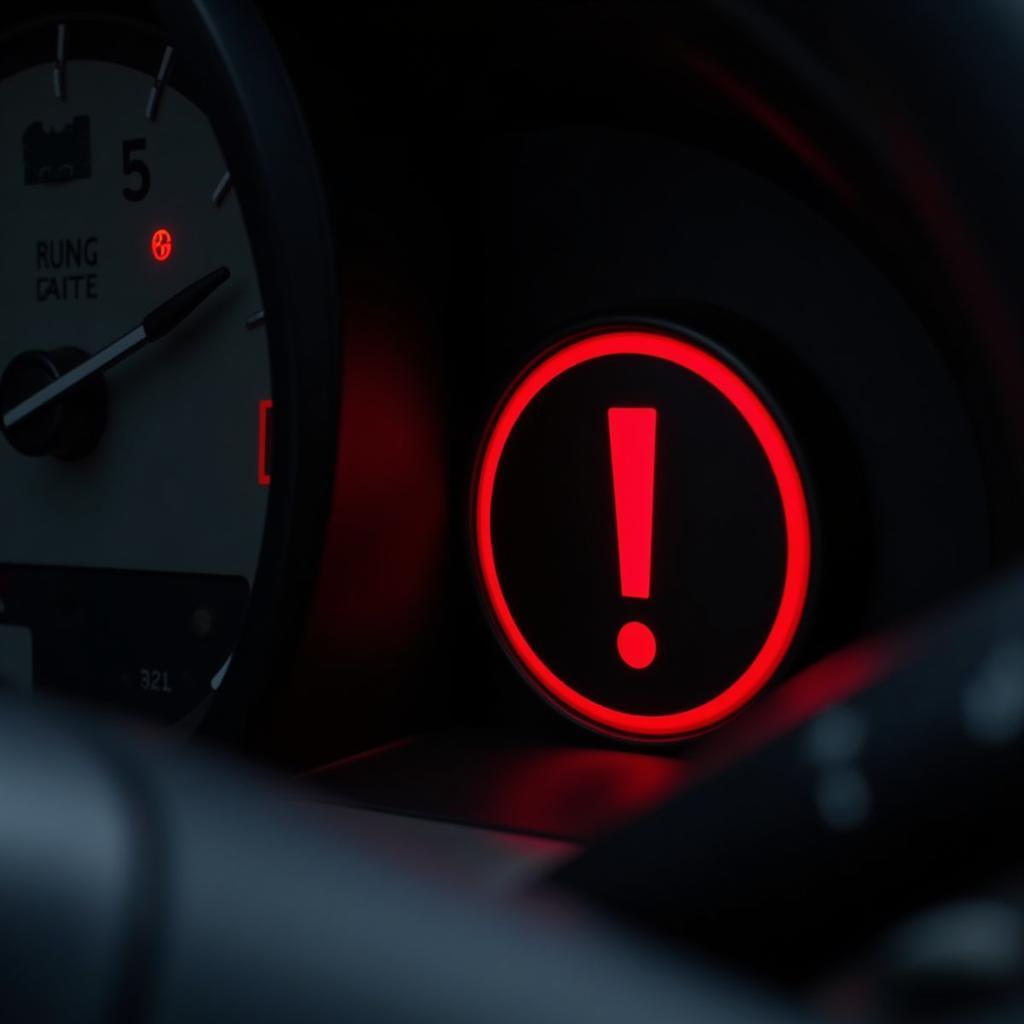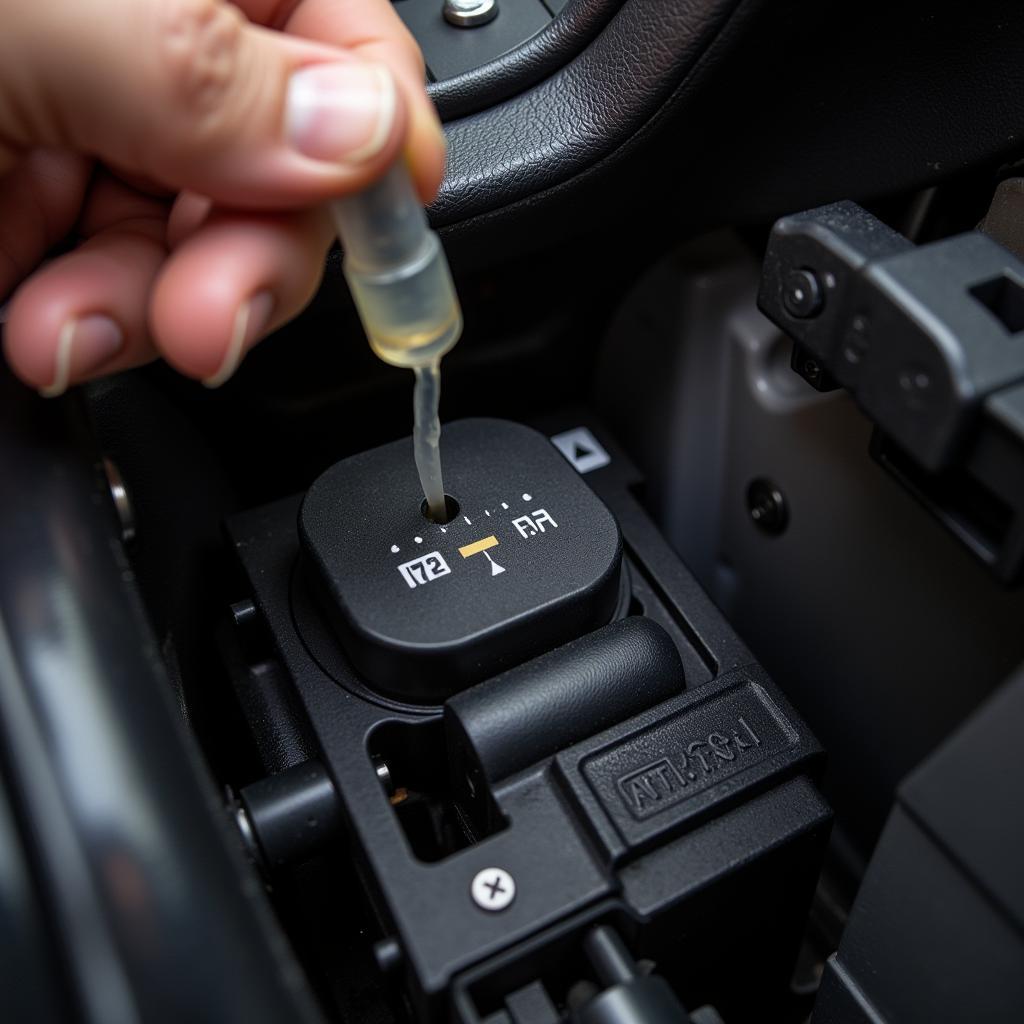The brake warning light on your Kia Soul dashboard is a crucial safety feature. When it illuminates, it signals a potential issue within your braking system that requires immediate attention. Ignoring this warning could lead to brake failure, putting you and others at risk. This comprehensive guide will walk you through the common causes of a Kia Soul brake warning light, how to diagnose the problem, and the steps you can take to resolve it.
Understanding Your Kia Soul’s Brake Warning Light
The brake warning light typically appears as a red circle with an exclamation mark (!) or the word “BRAKE” inside. It can also be accompanied by a chime or a message on your dashboard display. The light can indicate several issues, ranging in severity.
Common Causes of a Kia Soul Brake Warning Light
 Kia Soul Brake Fluid Reservoir
Kia Soul Brake Fluid Reservoir
1. Low Brake Fluid Level
One of the most common reasons for the brake warning light to illuminate is low brake fluid. Brake fluid is essential for transmitting the force you apply to the brake pedal to the wheels, ultimately stopping the car. If the fluid level is low, it could signify a leak in the system, which needs immediate attention.
2. Worn Brake Pads
Your Kia Soul is equipped with a sensor that monitors the thickness of your brake pads. When the pads wear down beyond a certain point, the sensor triggers the brake warning light. Worn brake pads reduce braking efficiency and can cause damage to the rotors if left unchecked.
3. Faulty Brake Light Switch
The brake light switch is responsible for activating your brake lights when you press the brake pedal. A malfunctioning switch can also trigger the brake warning light, even if your brake system is functioning correctly.
4. ABS Issue
Modern Kia Souls come equipped with an Anti-lock Braking System (ABS). The ABS prevents the wheels from locking up during hard braking, allowing you to maintain steering control. If the ABS system detects a fault, it can trigger the brake warning light.
 Kia Soul ABS Sensor
Kia Soul ABS Sensor
5. Other Potential Issues
While less common, other issues like a faulty parking brake, problems with the master cylinder, or issues with the electronic brake control module can also trigger the brake warning light.
Diagnosing the Problem
If your Kia Soul’s brake warning light comes on, it’s crucial to diagnose the problem correctly before taking any action.
-
Check the Brake Fluid Level: The first and easiest step is to check the brake fluid level in the reservoir. Park your car on a level surface, open the hood, and locate the reservoir. If the fluid level is low, there may be a leak in the system.
-
Inspect Brake Pads: Visually inspect your brake pads through the spaces between the wheel spokes. If the pads appear thin or you notice a grinding noise when braking, they likely need replacement.
-
Consult a Professional: For ABS issues or if you suspect a problem with other brake components, it’s best to consult a qualified mechanic specializing in Kia vehicles.
What to Do When Your Brake Warning Light Comes On
-
Pull Over Safely: If the brake warning light comes on while driving, find a safe place to pull over immediately. Continuing to drive with a potential brake system problem is incredibly dangerous.
-
Do Not Drive: Once you’ve safely pulled over, do not attempt to drive your car until the issue has been diagnosed and addressed.
-
Seek Professional Help: Unless you are confident in your mechanical skills and the issue is a simple one like low brake fluid, it’s best to have your Kia Soul towed to a trusted mechanic or dealership for repair.
Remote Diagnostic and Repair Options for Kia Souls
2017 kia soul warning light brake fluid
With advancements in automotive technology, remote diagnostic and repair services are becoming increasingly available. These services can be particularly useful for diagnosing warning lights, like the brake warning light, in your Kia Soul.
-
Remote Diagnostics: Through a specialized device plugged into your car’s OBD-II port, trained technicians can remotely analyze your Kia Soul’s system data, pinpoint the cause of the warning light, and recommend necessary repairs.
-
Software Updates and Programming: In some cases, a software malfunction might trigger the brake warning light. Remote programming allows technicians to update your Kia Soul’s software wirelessly, potentially resolving the issue without requiring a physical visit to the repair shop.
“Remote diagnostics and programming have revolutionized how we approach car repairs,” says John Smith, a senior automotive electrician specializing in remote diagnostics. “We can now diagnose and even fix certain problems without the car ever entering the shop, saving time and hassle for the car owner.”
Conclusion
The brake warning light in your Kia Soul is a critical safety indicator that should never be ignored. While a simple issue like low brake fluid can be addressed quickly, other problems require professional attention. Remember, maintaining your braking system is paramount to your safety and the safety of others on the road. If your brake warning light comes on, take immediate action to diagnose and resolve the problem, ensuring your Kia Soul continues to brake safely and reliably.
FAQs
1. Can I still drive my Kia Soul with the brake warning light on?
No, it is extremely dangerous to drive with the brake warning light illuminated. Pull over immediately and seek professional assistance.
2. How often should I check my Kia Soul’s brake fluid?
It’s a good practice to check your brake fluid level at least once a month and top it off if necessary.
3. How long can I drive on worn brake pads?
It’s not advisable to drive on worn brake pads. Once you notice a decrease in braking performance or hear grinding noises, have your brake pads inspected and replaced immediately.
4. How much does it cost to replace a brake light switch on a Kia Soul?
The cost can vary depending on your location and the specific model year of your Kia Soul. However, it’s generally an affordable repair.
5. Can a faulty battery cause the brake warning light to come on?
While rare, a weak battery can sometimes cause various warning lights to illuminate. However, it’s crucial to have your braking system checked to rule out any serious issues.


